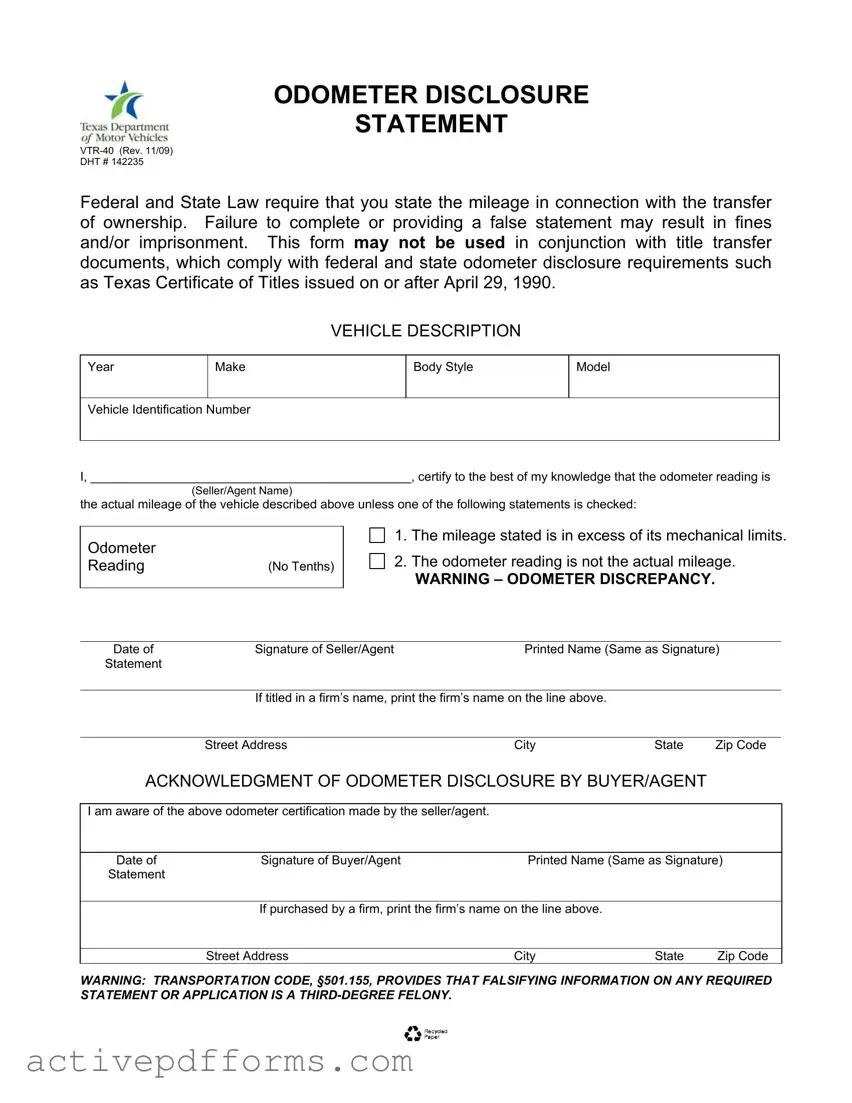In the realm of vehicle transactions, the integrity of the mileage stated on a vehicle plays a crucial role in ensuring transparency and fairness between the parties involved. The Texas Odometer Statement form, officially known as VTR-40 (Rev. 11/09), emerges as a pivotal document in this process, adhering to both federal and state mandates that dictate the disclosure of a vehicle's mileage upon ownership transfer. Highlighting the significance of honesty in such disclosures, the form serves as a stark reminder that failure to accurately complete it, or intentionally providing false information, can lead to severe legal repercussions, including fines and imprisonment. Its specific design precludes its use alongside title transfer documents that already meet odometer disclosure requirements, a restriction that underscores the evolving regulatory landscape post-April 29, 1990, when Texas Certificates of Title underwent modifications to incorporate such information. The form not only facilitates a declaration of the vehicle's current odometer reading but also allows for the acknowledgment of any discrepancies, such as mileage exceeding mechanical limits or an odometer reading that does not reflect the actual mileage, through clearly marked checkboxes. This process ensures that all parties, including buyers or their agents, are fully informed and can acknowledge the odometer certification provided by the seller or the seller's agent, reinforcing the transaction's transparency. Ultimately, the Texas Odometer Statement form embodies the legal commitment to accuracy and truthfulness in vehicle sales, safeguarding both buyer and seller within the complex tapestry of automotive commerce.

